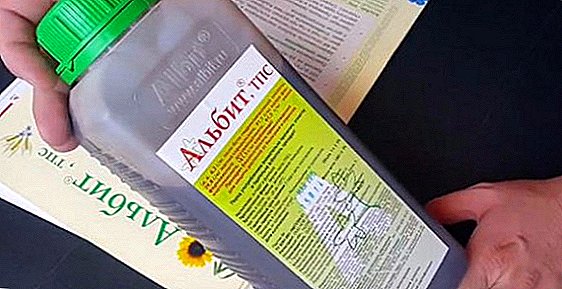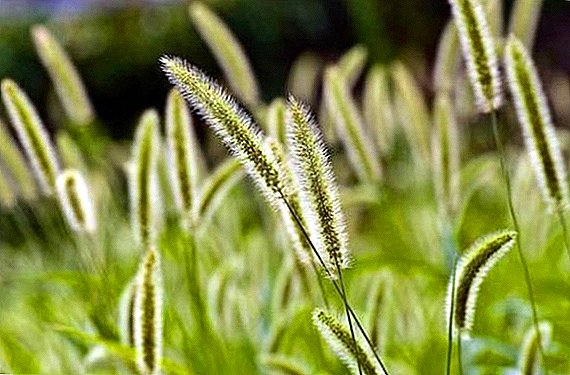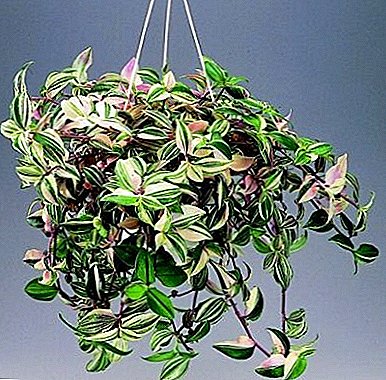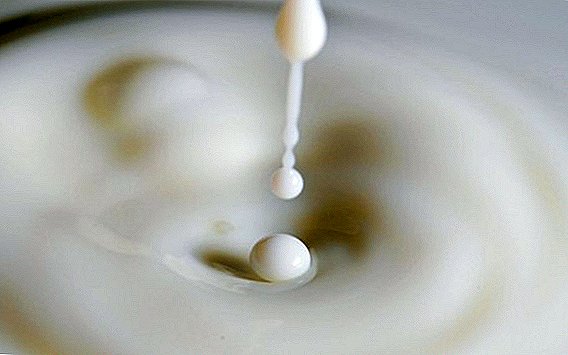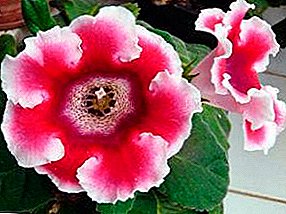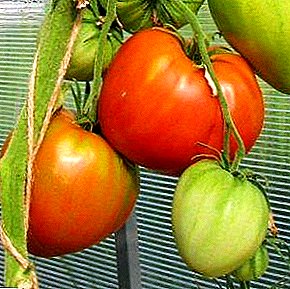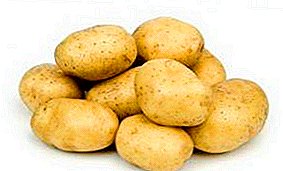
Many gardeners consider the varieties of yellow potatoes the most delicious. The grade "League" is universal, it is grown up for the use in food and production of various components (starch, spirit components).
This is an early variety of ripening, it is possible to harvest for further storage 80 days after the first shoots, and the roots by this time reach their technical maturity.
In the article you will find a detailed description of the variety, get acquainted with its characteristics and photos.
Description
| Grade name | League |
| general characteristics | early ripe grade, easy to clean, easily adaptable to any conditions |
| Gestation period | 70-75 days |
| Starch content | 12-16% |
| Mass of commercial tubers | 90-125 g |
| The number of tubers in the bush | 6-10 |
| Yield | 210-350 c / ha |
| Consumer quality | good taste, medium stew, suitable for soups, chips, fries, cooking in uniform |
| Recumbency | 93% |
| Skin color | yellow |
| Pulp color | light yellow |
| Preferred growing regions | West, North-West |
| Disease resistance | resistant to potato cancer, golden cyst nematode, moderately susceptible to late blight |
| Features of growing | recommended preliminary germination, sowing scheme - 60 × 35 cm, depth - 8-10 cm, standard agricultural technology |
| Originator | LLC breeding company "League" (Russia) |
The shape of the root "League" - elongated, oval - oblong. Weight - from 90 g to 130 g., Sizes from 9 cm in length. The peel has a dense, smooth texture, yellow color.
The eyes are small, are on the surface. The flesh has a light yellow (cream) color, dense, watery structure. Starch content - from 11 to 17%.
The shoot is a short, sprawling, semi-upright shrub. The leaves are typical for potato forms of medium waviness, large or medium in size, dark green in color, wrinkled without pubescence of the structure, located on the bushes at intervals.
Inflorescences contain many flowers with large corollas of deep red or pale purple.
Growing regions
The League is developing excellently in the North, North-West, Central regions due to its precocity. Grown throughout the territory of the Russian Federation and the countries bordering it. It is not exacting to soil type.
In the southern regions of the Russian Federation, some watering is required in dry soil.
Yield
The yield in the north-western region of the Russian Federation exceeds 400 quintals per 1 ha, which corresponds to the standards. With the first digging into conditional maturity (45 days after most shoots), it is possible to harvest about 170 centners per hectare, which exceeds the norm.
Application
The potato variety “League” is universal, because of the amount of starch it has an elastic structure, does not boil soft, behaves well in soups and salads, and is successfully used as a side dish.
Suitable for the production of chips and french fries, as well as starch and other components.
The starch content in other varieties of potatoes you can see in the table below:
| Grade name | Starch content |
| Ilinsky | 15-18% |
| knapweed | 12-16% |
| Laura | 15-17% |
| Irbit | 12-17% |
| Blue-eyed | 15% |
| Adretta | 13-18% |
| Alvar | 12-14% |
| Breeze | 11-15% |
| Kubanka | 10-14% |
| Crimean rose | 13-17% |
Taste qualities
It has a good, delicate taste, moderately sweet. The structure allows you to eat potatoes in fried and other variants.
Reference. Potatoes contain many beneficial substances (vitamin C, potassium, phosphorus), as well as a large amount of carotene (a powerful antioxidant).
The most appropriate option for cooking potatoes is boiling or roasting in a uniform. Some gardeners recommend using it exclusively with the skin, because it contains the greatest amount of vitamins.
A photo
Having laid out all about the potato "League" with a detailed description of this variety, we offer you a selection of photos:



Advantages and disadvantages
disadvantages:
- It has an average resistance to late blight of tubers.
- According to the reviews of gardeners there are insignificant single low-quality signs.
Virtues:
- early maturity;
- high yield;
- large fruit with superficial eyes;
- excellent taste;
- universality of use;
- good keeping quality;
- resistance to many diseases;
- good resistance to mechanical damage;
- good drought tolerance.
Bred by breeders from the Russian Federation, test cultivation produced in areas of the North-West region. Included in the State Register of the Russian Federation for the North - West region in 2007.
 Growing potatoes is not a difficult process at first glance. But he has a number of its features.
Growing potatoes is not a difficult process at first glance. But he has a number of its features.We offer you useful materials on why herbicides and fungicides are needed for growing potatoes.
We also offer to familiarize yourself with other methods of growing potatoes. We have prepared detailed materials on Dutch technology, growing potatoes under straw, in barrels and bags.
Features
Harvested potatoes for seeds often germinate strongly, and long sprouts should be removed. For a week or two before planting, the potatoes selected from the bad tubers need to be “prozenized” - placed in a sunny place. Some gardeners are advised to leave green root crops for seeds, they develop better in the future.
Attention! It is not recommended to eat green potatoes as food, when sunlight accumulates a harmful substance - corned beef, which in large quantities can harm the body.
Landing is made in the heated soil in the grooves or indentations, the planting period - from late April to May. The grooves are about 190 cm, the distance between the plants should be about 20 cm. In areas with very wet soil, potatoes should be planted on hills - artificially created ridges.
The soil must be fertilized. How and when to apply fertilizer, as well as how to do it properly when planting, read the individual materials of the site.
You can not plant potatoes on the territory where tomatoes or potatoes grew in the past year, you should wait at least 3 years to avoid diseases. It is not recommended to plant potatoes near tomatoes and apples.
The best neighbors of potatoes will be legumes, onions and cabbage. Prior to the first shoots, potatoes can be treated with substances against weeds, herbicides, while shoots cannot be processed.
"League" perfectly responds to loosening (harrowing), hilling, weeding and feeding (root, spraying bushes). Removal of flowers will positively affect the development of tubers. Mulching may also be helpful.
Attention! Early potatoes should be harvested immediately after reaching technical maturity.
"League" has a high percentage of commercial tubers. The variety is well preserved for a long time, including in winter, provided that a constant temperature of about 3 degrees is kept warm, it should not be less - the potatoes will become too sweet. Storage - it must be dry and dark, otherwise the potato will start to rot, and the timing.
Also in the table below you can compare the keeping quality of other varieties with potatoes League:
| Grade name | Recumbency |
| Arosa | 95% |
| Vineta | 87% |
| Zorachka | 96% |
| Kamensky | 97% (early germination at storage temperatures above + 3 ° C) |
| Lyubava | 98% (very good), the tubers do not germinate for a long time |
| Molly | 82% (normal) |
| Agatha | 93% |
| Burly | 97% |
| Uladar | 94% |
| Felox | 90% (early awakening of tubers at temperatures above + 2 ° C) |
Diseases and pests
"League" is perfectly resistant to the golden cyst-forming nematode, tuber cancer. Less resistant to late blight of tubers and shoots. Against the attacks of the Colorado potato beetle, the wireworm, the scoop, the aphid should be used microbiological preparations - insecticides. It is necessary to spray for prevention.
"League" is a worthy representative of yellow varieties of potatoes. Early maturity will allow gardeners to enjoy the taste and aroma of potatoes in full.
And in the table below you will find links to other interesting varieties of potatoes that have a variety of ripening periods:
| Late-ripening | Medium early | Middle late |
| Picasso | Black Prince | Blue |
| Ivan da Marya | Nevsky | Lorch |
| Rocco | Darling | Ryabinushka |
| Slav | Lord of the expanses | Nevsky |
| Kiwi | Ramos | Courage |
| Cardinal | Taisiya | Beauty |
| Asterix | Lapot | Milady | Nikulinsky | Caprice | Vector | Dolphin | Svitanok Kiev | The hostess | Sifra | Jelly | Ramona |



